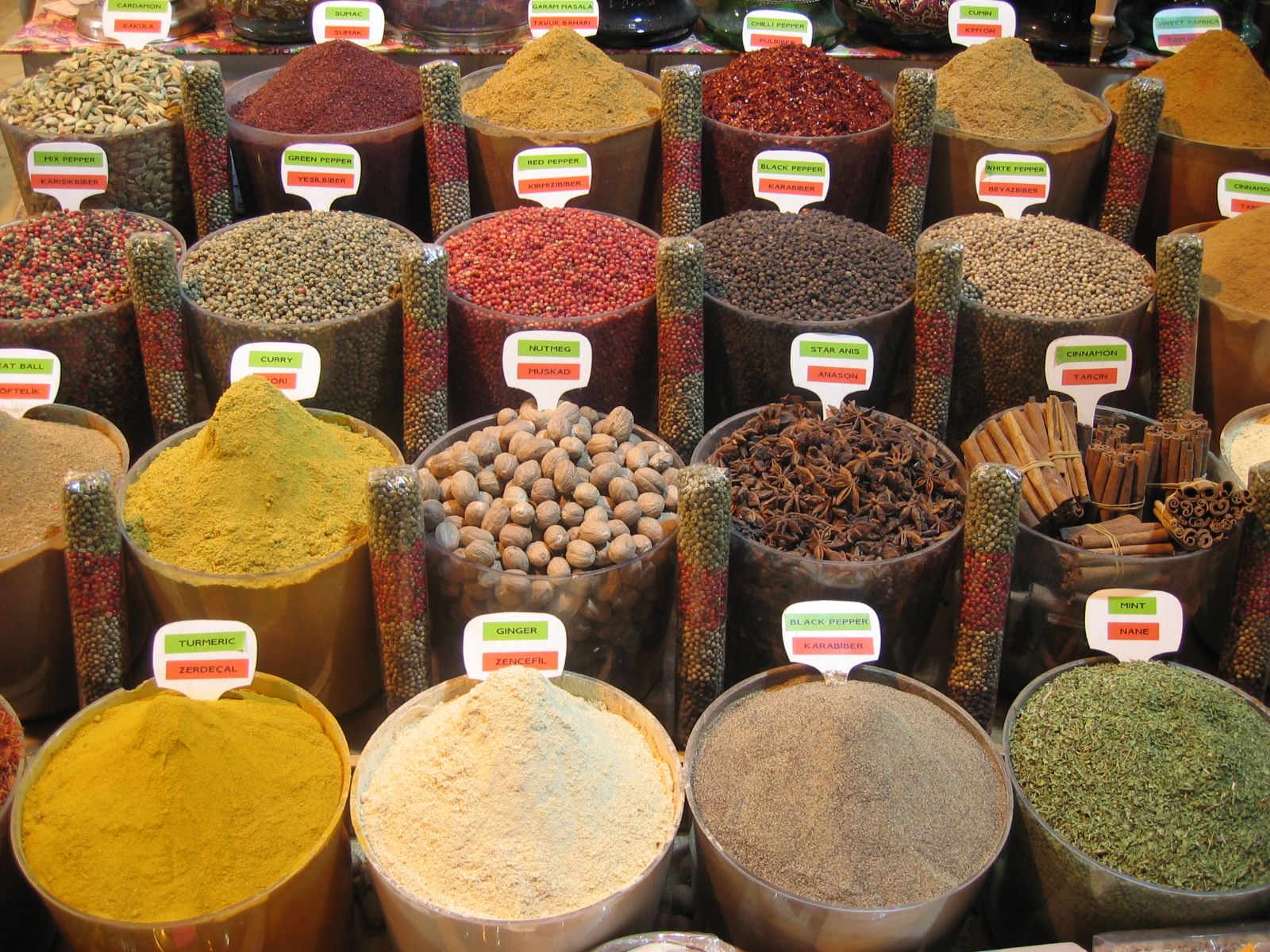 |
| A spice market in Istanbul. (From: Wikipedia) |
"The twentieth-century American, taking for granted refrigeration, ease and rapidity of transport, and the resulting extraordinary variety of diet, may find perplexing his ancestors' lust for spices. We must remember some of the foods Europeans lacked. They had no rice, no corn, no potatoes; little cheese or butter; fresh fruits and green vegetables only in season, and few of these in the larger cities; almost no sugar. Fresh meat was relatively plentiful at the moment of massive slaughter in the autumn. At other times of year meat was salted and more than a little high; and since its source was excess work animals, it was hardly of prime quality. The ordinary diet was based on bread and gruel, enlivened by pickled cabbage, turnips, peas, lentils, and onions. The entire art of cookery lay in the sauce, and the piquancy of the sauce lay in its spices. Men wanted spices because they teased the palate, disguised the disagreeable or dull, gave variety to the menu. They wanted them for medicines and drugs, for perfumes and for use in religious ceremonies. The result was a most powerful demand for camphor, cinnamon, nutmeg, ginger, mace, cardamom, and, above all, for pepper and cloves--all products of Asia and excessively rare in Europe." (36) --Eugene F. Rice, Jr. and Anthony Grafton,
The Foundations of Early Modern Europe, 1460-1559 2nd edition
I might also add that medieval Europeans had no tomatoes. Tomatoes are native only to South America. So, for hundreds and hundreds of years before the 16th century, Italian cooks had no tomatoes!

